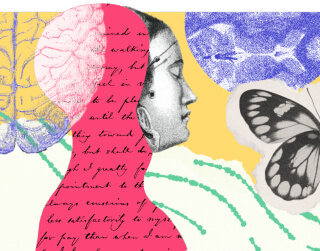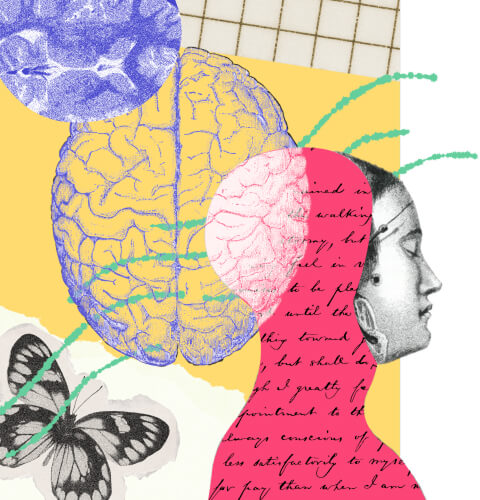LiveMint | How to create an ADHD accessible workspace
As awareness of ADHD among adults increases, diagnosed individuals need greater understanding and support from those around them
– By Natasha Joshi, Associate Director, RNP
In the last five years, google searches for “ADHD” in India have increased 614%. The rates of diagnosis in both children and adults have also increased in the same period. What was virtually unknown as a condition in India 20 years ago is now on many lips, with many people wondering if they have ADHD—attention deficit hyperactivity disorder—or diagnosing themselves with it. Social media has played an important role in putting ADHD on the map, but credible information is still hard to come by.
Understanding ADHD
At Mannotsava, a national mental health festival co-hosted by Rohini Nilekani Philanthropies, NIMHANS (National Institute of Mental Health and Neurosciences) and NCBS (National Centre for Biological Sciences), late last year, Dr Eesha Sharma of NIMHANS helpfully outlined what ADHD is.
Attention deficit hyperactivity disorder is a developmental delay that typically reveals itself in early childhood, and relates to a child’s diminished ability for focus, self-regulation and impulse control in a way that is considered appropriate for their age.
The key aspect here is “age appropriateness”. Expecting three-year-olds to sit still or focus on any task for more than a few minutes is unrealistic. Asking that of seven-year-olds is understandable. According to Dr Sharma, “developmental abilities, if they become problematic, become problematic in a context.” Unlike mental illnesses where the difficulty is the same no matter what the environment, ADHD being a developmental disorder, turns into dysfunction when the developmental ability doesn’t match what one is expected to do.
Similarly, the converse is also true. Parents can be permissive in a way that fails to identify areas where the child is developing more slowly. An example given by Dr Divya Nallur, consultant psychiatrist, Amaha Health, illuminates this point. As someone working on adult ADHD, she cites instances of parents being unable to recall any issues when the person was a child. On probing, they might confirm that their child did display some behaviours linked with ADHD, but they thought those behaviours were normal. In those instances, it is often the children who, as young adults, approach clinicians for an evaluation; a trend that is growing as more people are coming across online posts on ADHD.
Most people exhibit some degree of behaviours typical to ADHD—we all forget things, we can be impulsive or procrastinate endlessly. What distinguishes these from a clinically diagnosed disorder is the level of severity. That and the context within which a behaviour is manifesting are incredibly important. Shuffling feet, jerking one’s arms and moving around rapidly is okay at a dance party but might be a symptom of ADHD if it happens at say, a funeral or a more sober occasion.
A thorough clinical evaluation is the gold standard when it comes to diagnosing a psychiatric disorder. Such evaluations do not just take into account the exhibited behaviour of an adult, they include the testimony of families, deep observations, household histories and many other contextual variables, which when put together, gives a better idea of the level and nature of dysfunctionality.
Time to evaluate
A crucial thing to note is that ADHD emerges before the age of 12. It can remain undiagnosed, but one cannot develop ADHD suddenly as an adult. For children, parents and educators are the primary observers, so schools can play a vital role in building awareness among teachers and parents. ADHD doesn’t always show up in the form of learning delays. Children with ADHD often struggle socially and it’s helpful to understand those aspects from their point of view.
Any kind of truancy should not be automatically termed “ADHD”. For adults, approaching qualified clinicians is an option. Educating oneself is also a good idea, provided one resists oversimplified or bite-sized content on social media. Modifying one’s environment, using time management apps or other tools can be useful too. In terms of “treatment”, ADHD is not something to be cured. As a developmental condition, ADHD can be managed well with guidance from an experienced clinician. When it comes to pharmacological interventions for mental disorders, ADHD medication appears to show good results in terms of reducing symptoms, and the benefits seem to outweigh the risks of taking medicines.
In the presence of substance use, behaviours can become harder to parse. Dr. Nallur explained that even if someone has mild ADHD, the struggles they have might be a result of other things and not a result of ADHD. “I have young people come to me convinced they have ADHD, and after three-four sittings it comes out they have been using cannabis for 18 months,” Dr. Nallur said. Again, proper diagnosis is key.
Labels can be freeing. To finally have a word or an explanation for a behaviour can feel deeply relieving. Yet, labelling oneself incorrectly can re-direct attention away from the real cause or issue that needs to be addressed.
A supportive environment
Dr Vidita Vaidya, a neurobiologist at Tata Institute of Fundamental Research, talked about the importance of sleep and exercise for mental well-being, as borne out in her research with rodents. Keeping to the circadian rhythm can be a powerful intervention for the brain and it may be time for schools to evaluate whether classes can start a bit later, something research has found to be particularly beneficial for teenagers. The key finding from the research on the benefits of exercise is that benefits accrue when the exercise is done voluntarily or is enjoyed. Access to sunlight and green spaces is another low hanging fruit.
Similarly, incremental changes at the workplace can go a long way in improving employee well-being. Offices can allow people to switch off after a certain hour in the evening, which will allow them room to incorporate voluntary movement and better sleep routines into the second half of their day. Given the link between nutrition and mental well-being, even smaller interventions like stocking the office pantry with seeds and nuts, instead of sodas and chips, can help.
Whether one is clinically diagnosed with a mental disorder or not, caring and flexible environments benefit everyone. Given that the mental health paradigm has shifted away from mental illness being the primary lens, more dialogue is needed to arrive at practical ways in which neurodiversity and overall well-being can be accommodated.
Keywords
You may also want to read
Press Release | NIMHANS, NCBS, and Rohini Nilekani Philanthropies Announce the Second Edition of the National Mental Health Festival, Manotsava, in Bengaluru
Bengaluru, India, Oct 10, 2025 – Manotsava, the National Mental Health Festival, returns on 8–9 November 2025 at The Lalit Ashok, Bengaluru. Co-hosted by Rohini Nilekani Philanthropies (RNP), National Institute[...]
Funding Hope and Wellbeing | Rohini Nilekani & Melinda French Gates
In this insightful conversation, Rohini Nilekani, Chairperson of Rohini Nilekani Philanthropies, engages in a heartfelt conversation with Melinda French Gates, Founder of Pivotal Ventures, about the power of wellbeing to inspire welldoing. As[...]
Keynote by Rohini Nilekani – Hearth Summit Bangalore 2024
At the Hearth Summit Bangalore 2024, Rohini Nilekani (Chairperson, Rohini Nilekani Philanthropies), underscored the importance of building robust support systems for changemakers, social sector professionals & leaders committed to betterment[...]


